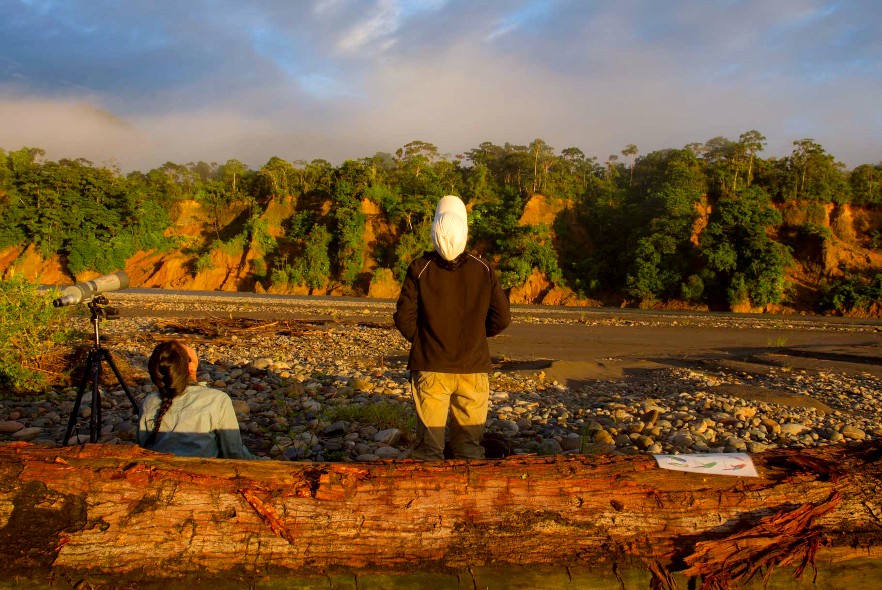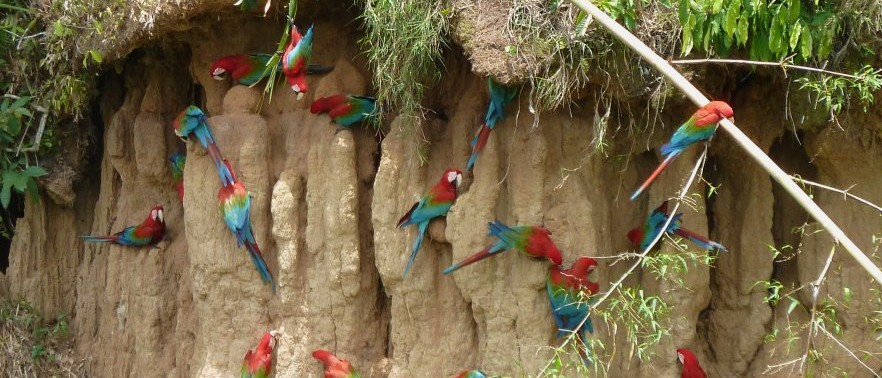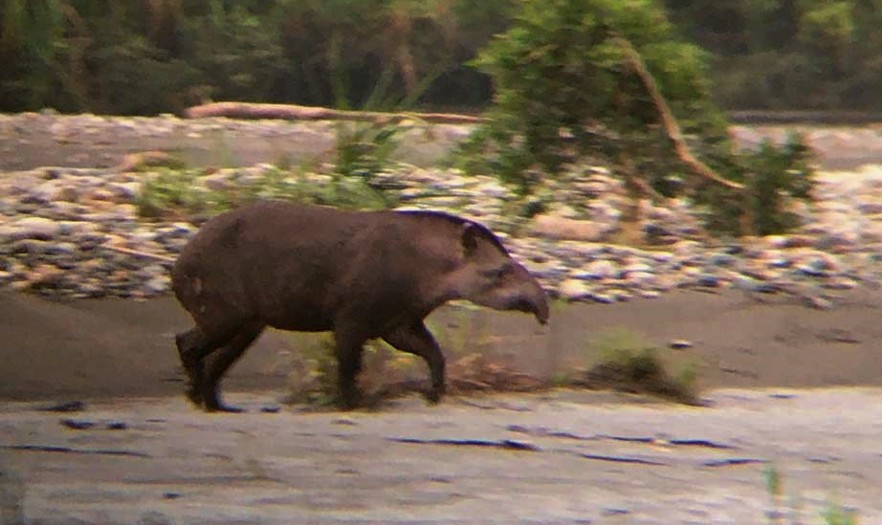An unexpected visitor in the jungle
Project & Pod News / 02 August 2023
Along the Alto Madre De Dios River, the team of volunteers and scientists at our Amazon Conservation project are fortunate enough to have their very own clay lick (known locally as a Collpa) nearby that regularly gets visitors from the Psittacidae family; macaws, parrots, and parakeets. It looks like the birds are eating dirt, but the steep muddy bank is a Collpa which contains essential salt. Amazonian animals are often seen at the river edge licking them.

Each week early in the morning the Amazon Research team collect data to monitor social behaviours and eating patterns of these birds. However, sometimes they get unexpected guests to the area as well.
After a quiet start to the morning, the research team turned away from the Collpa in hope of seeing birds in flight across the river but to their surprise were greeted by a Lowland Tapir swimming through the strong currents towards them. The mammal pushed through the flowing water and up on to the beach the team were monitoring from, only 20 metres away from the group, before trotting back into the river on the other side then disappearing into the undergrowth on the banks of the Alto Madre De Dios river. The team were able to take a quick blurry photo of it!

The Lowland Tapir, also known as the South American Tapir (Tapirus terrestris) is the largest native terrestrial mammal species in the Amazon with ancestry dating back over 30 million years. The herbivore, which is most closely related to rhinos and horses, weighs in at approximately 150-250kg as an adult. Despite this, the lowland tapir is still relatively graceful for its size and are known as very strong swimmers. This explains why their preferred habitat is lowland forests near wetlands and rives, as they regularly jump in to avoid trouble.
Unfortunately, the species is currently listed as Vulnerable (population decreasing) on the IUCN Red list as they are threatened by habitat destruction, hunting (for meat and hide), climate change, and road development. The Lowland Tapir is docile and shy, making population estimates difficult to determine. Estimates say there are only around 3000-4500 left in the wild throughout South America, making a sighting such as this a very rare occurrence.
If you would like a chance to see a tapir alongside the more common sightings of monkeys, parrots, butterflies and lizards then head to our Amazon Conservation page to find out more about this trip!







